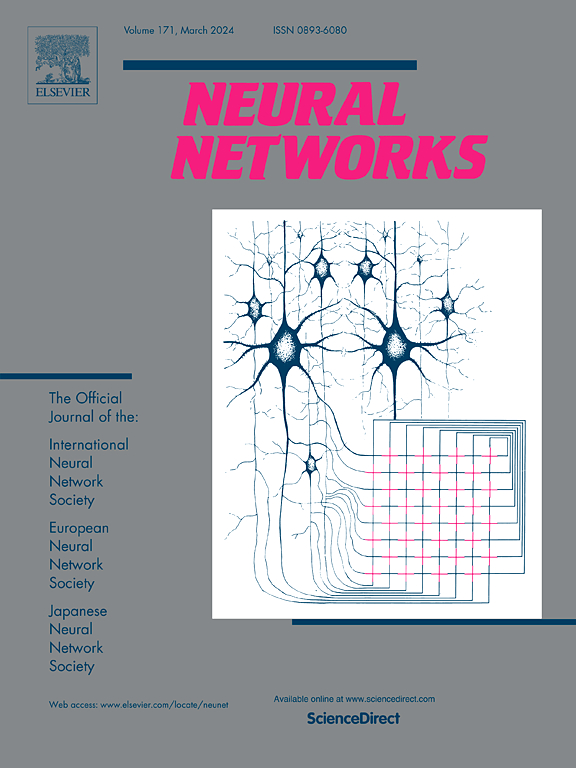Spike-VisNet: A novel framework for visual recognition with FocusLayer-STDP learning
IF 6
1区 计算机科学
Q1 COMPUTER SCIENCE, ARTIFICIAL INTELLIGENCE
引用次数: 0
Abstract
Current vision-inspired spiking neural networks (SNNs) face key challenges due to their model structures typically focusing on single mechanisms and neglecting the integration of multiple biological features. These limitations, coupled with limited synaptic plasticity, hinder their ability to implement biologically realistic visual processing. To address these issues, we propose Spike-VisNet, a novel retina-inspired framework designed to enhance visual recognition capabilities. This framework simulates both the functional and layered structure of the retina. To further enhance this architecture, we integrate the FocusLayer-STDP learning rule, allowing Spike-VisNet to dynamically adjust synaptic weights in response to varying visual stimuli. This rule combines channel attention, inhibition mechanisms, and competitive mechanisms with spike-timing-dependent plasticity (STDP), significantly improving synaptic adaptability and visual recognition performance. Comprehensive evaluations on benchmark datasets demonstrate that Spike-VisNet outperforms other STDP-based SNNs, achieving precision scores of 98.6% on MNIST, 93.29% on ETH-80, and 86.27% on CIFAR-10. These results highlight its effectiveness and robustness, showcasing Spike-VisNet’s potential to simulate human visual processing and its applicability to complex real-world visual challenges.
求助全文
约1分钟内获得全文
求助全文
来源期刊

Neural Networks
工程技术-计算机:人工智能
CiteScore
13.90
自引率
7.70%
发文量
425
审稿时长
67 days
期刊介绍:
Neural Networks is a platform that aims to foster an international community of scholars and practitioners interested in neural networks, deep learning, and other approaches to artificial intelligence and machine learning. Our journal invites submissions covering various aspects of neural networks research, from computational neuroscience and cognitive modeling to mathematical analyses and engineering applications. By providing a forum for interdisciplinary discussions between biology and technology, we aim to encourage the development of biologically-inspired artificial intelligence.
 求助内容:
求助内容: 应助结果提醒方式:
应助结果提醒方式:


